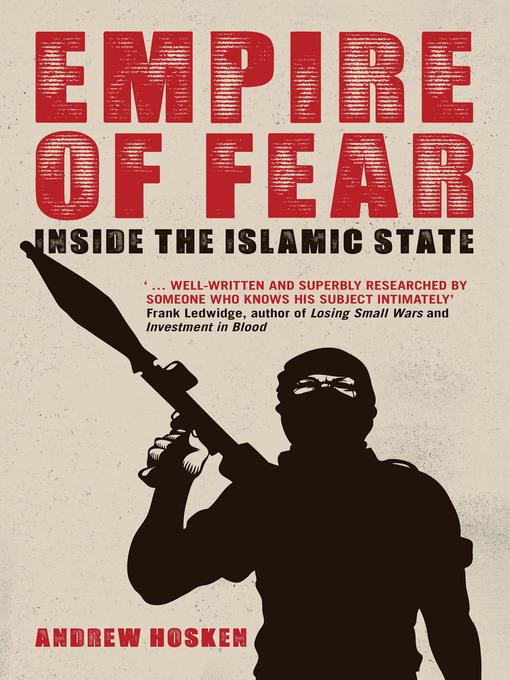
Empire of Fear
Inside the Islamic State
کتاب های مرتبط
- اطلاعات
- نقد و بررسی
- دیدگاه کاربران
نقد و بررسی

September 21, 2015
Hosken (Nothing Like a Dame) offers extensive and easily understood historical context to the rise of the self-anointed Islamic State, from the death of the prophet Mohammad to the present day. Since 9/11, Americans have focused on radical Islamist groups as the source of a rise in global terrorism. The ascension of the Islamic State, their accumulation of vast swaths of territory, and the increasing number of atrocities committed by the terrorist group have given rise to fear and anger throughout the world. Hosken presents a fair history of the group and the political climate that allowed it to rise: "What is certain is that the ISIS monster emerged from a poisonous witches' brew of sectarianism, proxy wars and competing national, and international interests." For Hosken, it is clear the Islamic State veils murderous motives behind the auspices of religion. It's a bloody, violent tale, told here with compassion and a quest for understanding. Hosken explores these historical roots with depth and clarity; readers will come to understand a more focused version of what motivates the Islamic State.

Starred review from July 15, 2015
An exploration of the spreading terror of the self-proclaimed new caliphate. Senior BBC reporter Hosken, who has covered 9/11 and the Arab Spring, among other major world events, has been tracking the rise of the Islamic State since 2003, as it took root with the United States-led invasion of Iraq. There are enormously complicated yet logical steps to the terrorist organization's horrifying rise, and the author does a thorough job of building the chronology. The first Jordanian leader of IS, Abu Musab al-Zarqawi, was radicalized in prison by Islamist extremism and the idea of eradicating apostasy, in the form of anyone not subscribing to the narrow Salafist ideology-e.g., Shia Muslims, Yazidis, Christians, and many others. From 1996 to 2003, followers adhered to a specific blueprint and embraced a bloodthirsty campaign of purging Shia enemies (the majority in Iraq) and employing widespread terrorism, culminating in the declaration of a caliphate by 2014-embodied with the capture of Mosul. The U.S.'s disastrous decision to dissolve the Ba'ath Party led many embittered generals to join the insurgency. After al-Zarqawi's death in June 2006, the next leader and future caliph of IS, Abu Bakr al-Baghdadi, followed the terror strategy laid out in a manual called The Management of Savagery: suicide bombs, massacres, beheadings, abduction and rapes of women and children, terrorizing the population of Anbar province. Al-Baghdadi made the crucial decision to enter the Syrian civil war in 2011, which gave the group deadly new impetus leading to the declaration of a caliphate. Hosken does an excellent job of sorting out the American reaction, the failure of the Iraqi leadership in the form of Nouri al-Maliki and others, and how IS has becomes the richest terrorist group in the world. A tremendously useful, insightful study of the frightening spread of a culture of death.
COPYRIGHT(2015) Kirkus Reviews, ALL RIGHTS RESERVED.

























دیدگاه کاربران